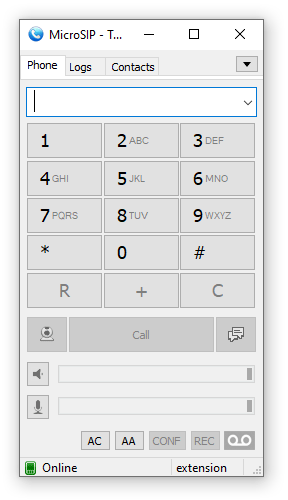MicroSIP datasheet
Jump to navigation
Jump to search
MicroSIP is a SIP softphone based on the PJSIP stack available for Microsoft Windows. It facilitates high quality VoIP calls based on the open SIP protocol.
| IP Ports and Protocols used by SIP Devices. The following ports are associated with a successful communication: |
| IP Ports and Protocols used by SIP Devices | |||
|---|---|---|---|
| Trust Over IP | Port | Type | Description |
| SIP Server Ex. 192.168.1.1 | 5060 | UDP | SIP endpoints |
| SIP Server Ex. 192.168.1.1 | 10000:65000 | UDP | RTP/SRTP Media |
| A security group controls the traffic that is allowed to our IP; reach and leave the resources that it is associated with. |
- General
- Softphone usage modes
- Single call mode - single window, basic functionality. Enabled by default.
- Extended mode - two windows, multiple calls, conferences, attended transfers.
- Communication types
- Calls through SIP server / PBX - select "Add Account" after installing.
- Direct calls by IP address (or domain name). Works out of the box, using the "Local Account".
After automatic startup or when you close the main window MicroSIP will be minimized to the system tray.
MicroSIP does not require the installation of additional libraries, runtimes or frameworks.
- Dialpad
Mainly used for dialing or sending dual tones (DTMF). Various input formats are supported.
- Examples
- 1-800-567-46-57

- 1234
- 1234@sip.server.com
- 1234@sip.server.com:5043
- 192.168.0.55
- Or even complete SIP URI with optional microsip extensions
- "Name" <sip:extension@sip.microsip.org;parameter1=xxx?Custom-Header=yyy>,dtmf_sequence
- There is sound quality indication
